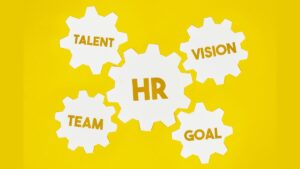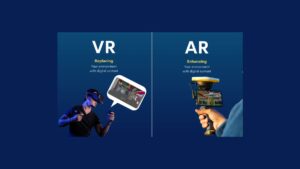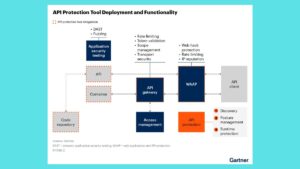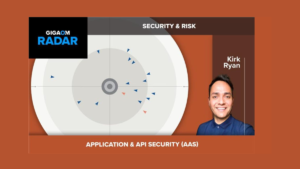The Role of HR Analytics in Shaping Workforce Strategies

In the modern workplace, data is the new oil, fueling strategic decision-making across all business functions. Human Resources (HR) is no exception. HR analytics, often referred to as people analytics, has emerged as a crucial tool for shaping workforce strategies that align with organizational goals. By leveraging data, HR professionals can make informed decisions that enhance employee experience, improve productivity, and drive business outcomes. In this blog, we will explore the role of HR analytics in shaping workforce strategies, and how it is transforming the HR landscape.
1. Understanding HR Analytics
What is HR Analytics?
HR analytics involves the systematic collection, analysis, and interpretation of HR data to inform decision-making. This data can include employee demographics, performance metrics, turnover rates, engagement levels, and more. By analyzing this data, HR professionals can uncover patterns, identify trends, and make data-driven decisions that align with the organization’s strategic objectives.
The Evolution of HR Analytics
Traditionally, HR decisions were based on intuition and experience. However, with the advent of big data and advanced analytics tools, HR has evolved into a more data-driven function. Today, HR analytics is not just about reporting past data; it’s about using predictive analytics to forecast future trends and prescriptive analytics to recommend actions that optimize workforce strategies.
2. Key Areas Where HR Analytics is Shaping Workforce Strategies
Talent Acquisition and Recruitment
One of the most significant areas where HR analytics is making an impact is in talent acquisition. By analyzing data from various sources, such as job boards, social media, and internal databases, HR professionals can identify the best channels for sourcing candidates, predict the success of new hires, and optimize recruitment processes. For example, predictive analytics can help HR teams forecast which candidates are most likely to succeed in a role, reducing time-to-hire and improving quality-of-hire metrics.
Employee Retention and Turnover Analysis
Employee turnover is a costly issue for many organizations. HR analytics can help identify the root causes of turnover by analyzing data related to employee satisfaction, engagement, and performance. By understanding these factors, HR can develop targeted retention strategies, such as personalized development plans, recognition programs, and improved work-life balance initiatives. Additionally, predictive analytics can be used to identify employees at risk of leaving, allowing HR to intervene proactively.
Performance Management and Development
HR analytics plays a critical role in performance management by providing insights into employee productivity, goal achievement, and skill gaps. By analyzing performance data, HR can identify high-performing employees, as well as those who may need additional support or training. This data-driven approach allows for more effective performance reviews, personalized development plans, and targeted learning and development programs. Moreover, HR analytics can help organizations align employee goals with business objectives, ensuring that performance management drives overall company success.
Workforce Planning and Optimization
Effective workforce planning requires a deep understanding of current and future talent needs. HR analytics enables organizations to forecast workforce demand, identify skill gaps, and optimize talent allocation. For example, by analyzing historical data on workforce trends, HR can predict future hiring needs and develop strategies to address potential talent shortages. This proactive approach ensures that the organization has the right people in the right roles at the right time, leading to improved efficiency and productivity.
Diversity and Inclusion Initiatives
Diversity and inclusion (D&I) are essential components of a successful workforce strategy. HR analytics can help organizations measure the effectiveness of their D&I initiatives by tracking key metrics, such as representation, pay equity, and employee engagement among different demographic groups. By analyzing this data, HR can identify areas for improvement and develop targeted strategies to promote a more inclusive workplace. For example, analytics can reveal whether certain groups are underrepresented in leadership positions, leading to initiatives aimed at increasing diversity at higher levels.
Employee Engagement and Well-being
Employee engagement and well-being are critical to organizational success. HR analytics provides valuable insights into what drives employee engagement and satisfaction. By analyzing data from employee surveys, feedback platforms, and productivity tools, HR can identify factors that contribute to a positive work environment. For instance, analytics might reveal that flexible work arrangements or recognition programs significantly boost engagement. Armed with this knowledge, HR can implement strategies that enhance employee well-being, reduce burnout, and improve overall job satisfaction.
3. Challenges in Implementing HR Analytics
Data Quality and Integration
One of the primary challenges in implementing HR analytics is ensuring data quality and integration. HR data often comes from various sources, such as HRIS systems, payroll, and performance management tools. To make accurate decisions, this data must be clean, consistent, and integrated into a single analytics platform. Organizations need to invest in data management practices and tools that ensure the integrity and accessibility of HR data.
Privacy and Ethical Considerations
HR analytics involves the use of sensitive employee data, raising concerns about privacy and ethics. Organizations must navigate these challenges carefully by implementing robust data protection measures and ensuring compliance with regulations, such as GDPR. Additionally, HR professionals must consider the ethical implications of their analytics practices, ensuring that data is used responsibly and transparently.
Skills and Expertise
HR analytics requires a unique set of skills that combine HR knowledge with data analytics expertise. However, many HR professionals may lack the necessary skills to effectively leverage HR analytics. To address this challenge, organizations can invest in training and development programs that equip HR teams with the skills needed to analyze data and make data-driven decisions. Alternatively, organizations can collaborate with data analytics professionals or invest in user-friendly analytics tools that simplify the process.
4. The Future of HR Analytics
AI and Machine Learning in HR Analytics
The future of HR analytics lies in the integration of artificial intelligence (AI) and machine learning (ML) technologies. AI and ML can enhance HR analytics by automating data analysis, providing real-time insights, and predicting future trends with greater accuracy. For example, AI-powered tools can analyze vast amounts of data to identify patterns and correlations that human analysts might miss. As these technologies continue to evolve, they will enable HR professionals to make even more informed decisions, driving better workforce strategies and outcomes.
Integration with Other Business Functions
HR analytics is increasingly being integrated with other business functions, such as finance, marketing, and operations, to provide a more holistic view of organizational performance. For example, by combining HR data with financial data, organizations can assess the ROI of their workforce strategies and make more informed decisions about resource allocation. This cross-functional integration will enable HR to play a more strategic role in driving business success.
Employee-Centric Analytics
As organizations continue to prioritize employee experience, the focus of HR analytics is shifting towards employee-centric metrics. This approach involves analyzing data that directly impacts employee well-being, satisfaction, and productivity. By prioritizing employee-centric analytics, organizations can create more personalized and effective workforce strategies that enhance employee experience and drive long-term success.
Conclusion
HR analytics is revolutionizing the way organizations approach workforce strategies. By leveraging data, HR professionals can make more informed decisions that enhance talent acquisition, retention, performance management, and overall employee experience. While challenges exist, such as data quality, privacy concerns, and the need for specialized skills, the benefits of HR analytics far outweigh the obstacles. As AI and machine learning technologies continue to advance, the future of HR analytics looks promising, offering even greater potential to shape workforce strategies that drive organizational success. Organizations that embrace HR analytics will be better equipped to navigate the complexities of the modern workplace and create a thriving, data-driven workforce.







